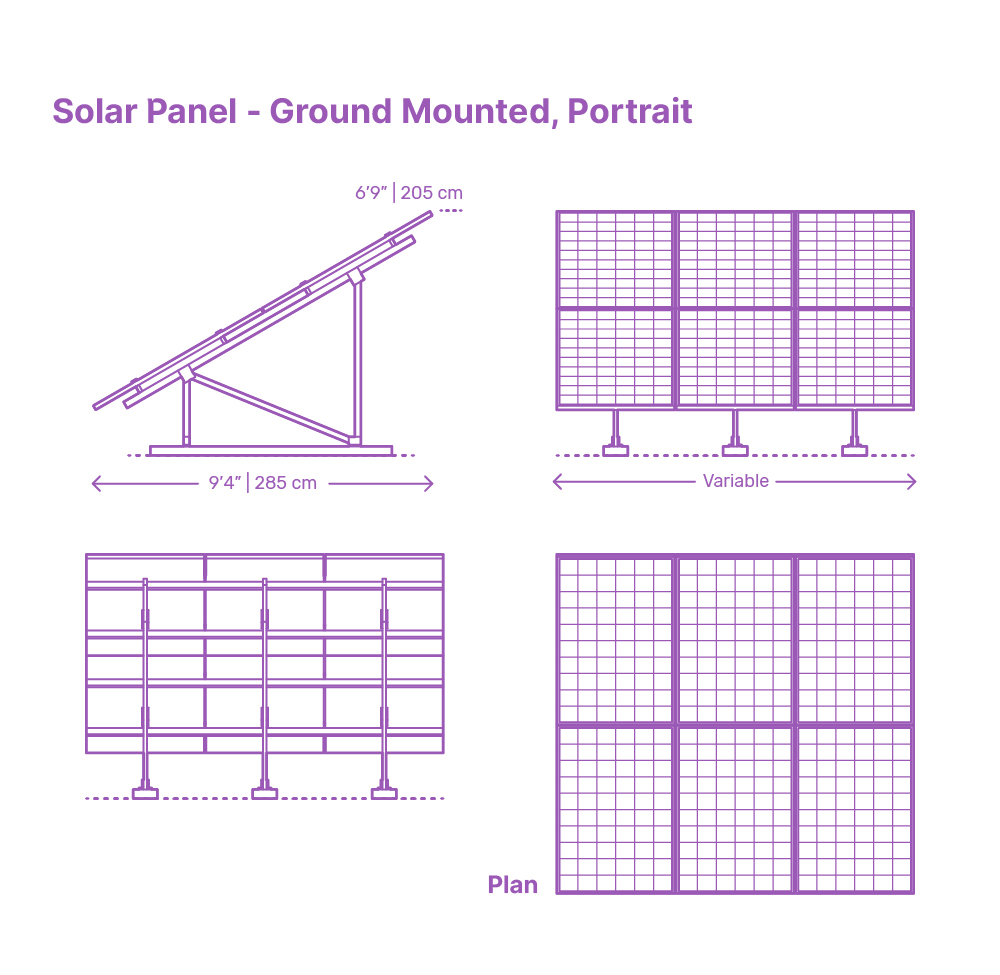
Solar power has emerged as one of the most widely available and well-liked options for industrial, commercial, and residential uses as the globe continues its transition to sustainable energy. What size solar panels do I need? is one of the first inquiries you'll have if you've made the decision to install a solar energy system.
The size of a solar panel has a significant impact on its overall efficiency, installation area, and energy output. But solar panel size also refers to the power output, or wattage, of the panel in addition to its physical dimensions. We'll go over all you need to know about solar panel sizes, their variations, and how to pick the best size for your requirements in this blog.
What Does the Size of a Solar Panel Mean?
Two things are usually taken into account when talking about solar panel size:
Dimensions in Physical Form
This describes a solar panel's real dimensions, including its length, width, and thickness. When figuring out how many panels you can place on your roof or installation location, physical size is crucial.
Output Power (Wattage)
A solar panel's power output, which is expressed in watts (W), is frequently described by its size. For houses or companies with greater energy needs, bigger wattage panels are perfect because they generate more electricity.
Common Dimensions for Solar Panels
To accommodate a range of uses, solar panels are available in different sizes. The most prevalent kinds are:
1. Solar panels for homes
Physical measurements are usually 1.65 meters by 1 meter, or 65 inches by 39 inches.
Power Output: Some models can have higher power outputs, however most fall between 350W and 450W.
Ideal For: Residential rooftop installations.
Residential solar panels are easy to install on small roof spaces because of their compact size and power output balance.
2. Solar Panels for Businesses
Physical measurements: 78 inches by 39 inches (2 meters by 1 meter) is the typical size.
Power Output: 400W to 600W or more is the range.
Ideal For: Extensive installations on business or industrial structures.
Larger and more potent, commercial panels are made to produce more electricity for companies that use more energy.
3. Convenient or compact solar panels
Dimensions of the body: varies greatly; typically, it is less than two feet by two feet.
Power Output: Usually between 5 and 200 watts.
Ideal For: Boats, RVs, camping, and other portable uses.
These panels are ideal for off-grid or transportable power requirements because they are small and light.
Factors Affecting the Size of Solar Panels
It takes more than just measurements to comprehend the size of a solar panel. The size required for your particular application depends on a number of parameters, including:
1. Energy Needs
The size of your solar system is directly related to how much electricity you use. Higher-wattage panels or more panels will be needed to meet larger energy requirements.
Low Energy Use: For homes with low energy requirements, smaller panels (around 350W) can be adequate.
High Energy Use: Larger or more potent panels may be required in homes or buildings with air conditioning, electric heating, or a lot of appliances.
2. Roof Space Available
Physical space is an important factor. Higher-wattage panels are required if the space on your roof is limited in order to optimize energy production. On the other hand, you can choose more standard-sized panels if you have enough of room.
3. Efficiency of the Panel
How well a solar panel converts sunlight into electricity is determined by its efficiency. High-efficiency panels, including those composed of monocrystalline cells, are perfect for locations with limited space since they can generate more electricity in a smaller physical footprint.
4. The budget
Compared to ordinary models, larger, higher-wattage or more efficient panels are frequently more expensive. Whether you emphasize power production, efficiency, or size may depend on your budget.
5. Type of Installation
Residential Rooftop: The most popular option for residences is standard-sized residential panels.
Ground-Mounted Systems: Because ground-mounted installations frequently have greater room, larger or more panels can be installed.
Solar Panel Wattage: Essential Information
Under optimal circumstances, a solar panel's wattage dictates how much electricity it can generate.
Low Wattage Panels (50W–300W): Perfect for small-scale uses like portable chargers, lighting, or RV systems.
Residential systems typically use medium-wattage panels (300–450W). These panels produce enough electricity for the majority of homes while striking a balance between size and efficiency.
High Wattage Panels (450W+): Usually found in households with high energy requirements or in business installations. Although they may be larger or more costly, high-wattage panels are more effective in producing electricity.
How to Select the Appropriate Size for Solar Panels
It takes considerable planning to choose the ideal solar panel size for your requirements. Here is a detailed procedure to assist you in making a decision:
1. Determine Your Energy Requirements
To find out how many kWh (kilowatt-hours) of energy you use on average each month, check your electricity statement. This will assist you in calculating the amount of electricity your solar system must generate.
2. Evaluate the Space You Need for Installation
Take measurements of the available area on your installation site or roof. To guarantee optimal sun exposure, take into account orientation, obstructions, and shade.
3. Speak with an Installer of Solar
To suggest the ideal solar panel size and system design, professional solar installers can assess your energy requirements, roof space, and financial constraints.
4. Examine Potential Growth
Installing bigger or more effective panels today will help you handle future expansion if you intend to raise your energy use in the future (for example, by buying an electric car).
Size of Solar Panels and Your Energy Objectives
Your specific energy objectives will determine the ideal solar panel size. For instance:
Selecting high-efficiency panels that can produce more power in a smaller area will maximize efficiency.
Cutting Expenses: Select panels of a standard size that strike a compromise between cost and functionality.
Off-Grid Solutions: In isolated areas, portable or compact panels are perfect for powering gadgets and small systems.
When building a solar energy system, solar panel size is a crucial consideration. You may make an informed choice that optimizes your investment by knowing how physical dimensions, power output, and your unique energy requirements relate to one another.
Installing solar panels for your house, place of business, or off-grid excursions will guarantee that you get the advantages of clean, renewable energy for many years to come if you take the time to consider the appropriate size.

 Call us : +86 13905633017
Call us : +86 13905633017 Mail us : info@hssolar.com
Mail us : info@hssolar.com Add : Industrial Zone, Ningguo, Xuancheng, China
Add : Industrial Zone, Ningguo, Xuancheng, China Support for IPv6 networks
Support for IPv6 networks



